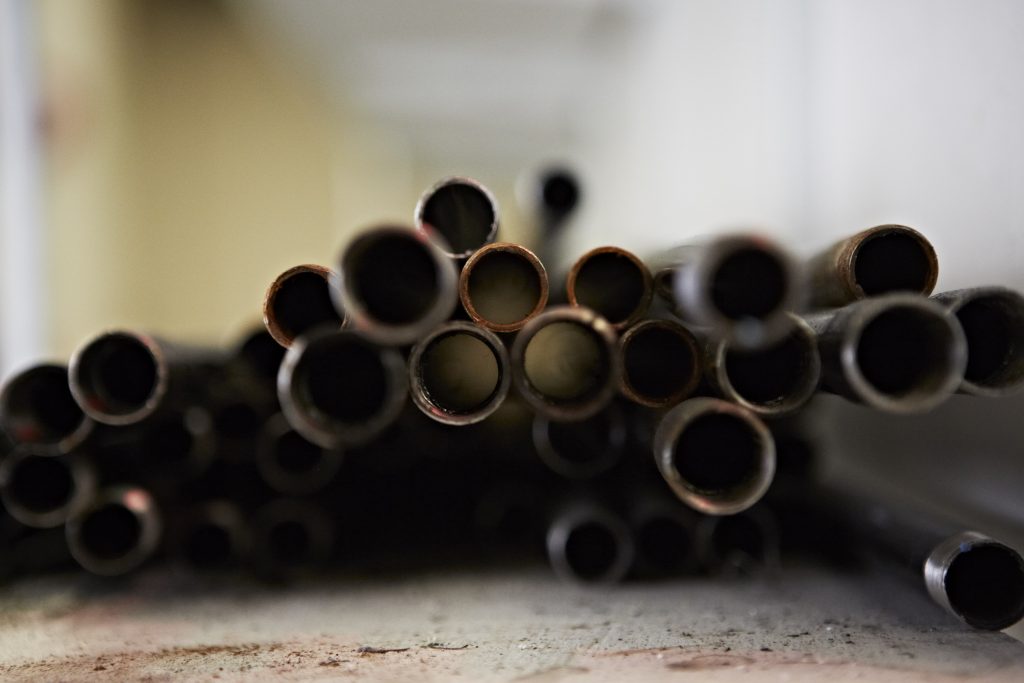Find useful advice on making more environmentally-friendly decisions when it comes to picking your plumbing materials.

As a whole, we’re seeing the construction industry undergo significant, much-needed shifts towards becoming more sustainable.
Whether that’s through new greener technologies and materials, or more planet-friendly building practices, the next few years are certain to bring an array of further changes that’ll begin to affect the day-to-day lives of tradespeople across the country.
As homeowners and businesses look for ways to make their properties more sustainable, plumbers are increasingly called upon to make recommendations based on the latest technologies and materials.
Traditional materials used in plumbing
Each different material frequently used by plumbers comes with its own set of pros and cons, so it’s hard to be completely cut and dry about what should and shouldn’t be being used.
Copper:
Perhaps one of the most common materials we think of when talking about plumbing is copper pipes. Copper has long been favoured due to its durability, resistance to corrosion and the fact it can be recycled. With that being said, the environmental impact of copper mining and the fact the material doesn’t break down naturally if it isn’t recycled has been an increasing cause for concern.
Iron:
Iron has been another long term popular choice as it can be recycled infinitely without losing its quality, and like copper, is incredibly strong. However, also like copper, the production of iron is damaging to the planet due to mining and the use of blast furnaces.
Brass:
Brass is another metal that can be constantly recycled and has an extremely long lifespan, up to 100 years in some cases. Despite that, it does contain zinc, which produces harmful by-products, like carbon monoxide and sodium oxide.
PVC:
PVC is now one of the most commonly used synthetic plastic polymers in the world, and has become popular in plumbing due to its light weight and resistance to corrosion. The toxic nature of the production of PVC, though, has led to Greenpeace labelling it the most environmentally-damaging plastic out there—largely due to its reliance on chlorine, which is incredibly damaging to the ozone layer.
Modern materials
PEX:
Research largely indicates that PEX is a much greener alternative to PVC. While it still possesses many of the same benefits, such as cost, flexibility and ease of installation, the process of making PEX is relatively low impact due to the low temperatures needed during extrusion.
Back in 2008, the Plastic Pipe and Fitting Association carried out a life cycle inventory research project, which when factoring in the production and use of piping materials, PEX came out above ABS, CPVC, PVC, polyethylene and copper. The big drawback, however, is that it cannot be fully recycled.
Stainless steel:
While the initial cost of steel has often been off-putting when choosing plumbing materials, its superior durability combined with 100% recyclability, due to not being a petroleum-based product, can make it another logical choice.
Plastic vs non-plastic
As the above suggests, coming to a definitive answer on whether plastic or non-plastic materials are more sustainable is difficult.
The lower temperatures needed during manufacturing means that an average of 10,000 Megajoules of energy are required for plastic pipework systems, considerably lower than the 25,000 for copper and 29,000 for steel.
Other tips for sustainable plumbing
Along with considering the types of material you use, installing more eco-friendly systems and being in a position to advise customers of their benefits can make a huge difference.
Flow-optimising, or low-flow showerheads can use up to 30% less water than traditional showerheads, while high energy efficiency toilets use considerably less water than traditional toilets when flushing, requiring between 2.6 and four litres per flush, as opposed to 14 litres.
Other technologies such as tankless water systems, which only heat water when needed and taps fitted with aerators, enabling high-pressure flow while using 30% less water, are just a few other changes that are becoming more commonplace.
Recycling old water systems where possible when replacing them is another simple, but effective way to make a difference.